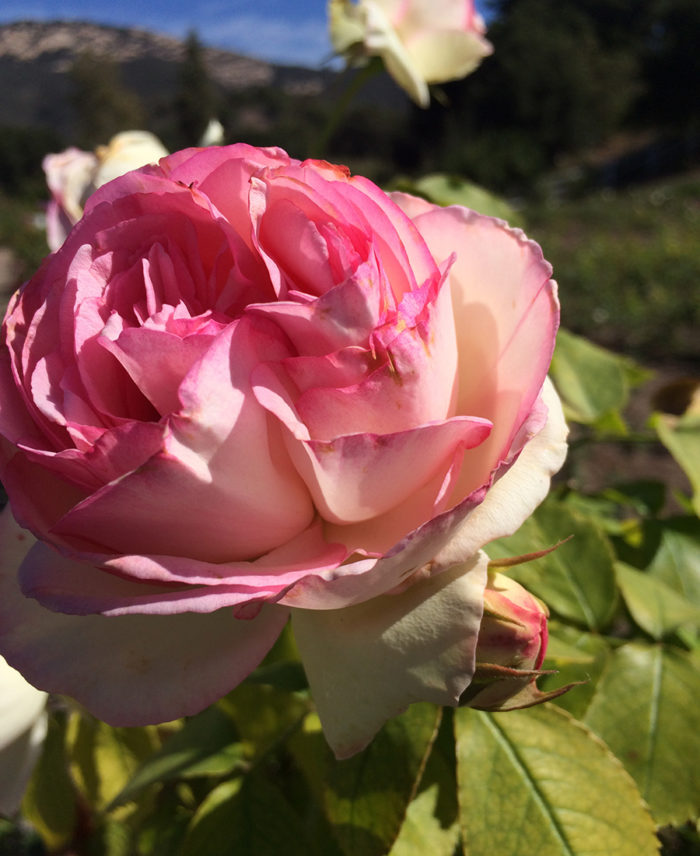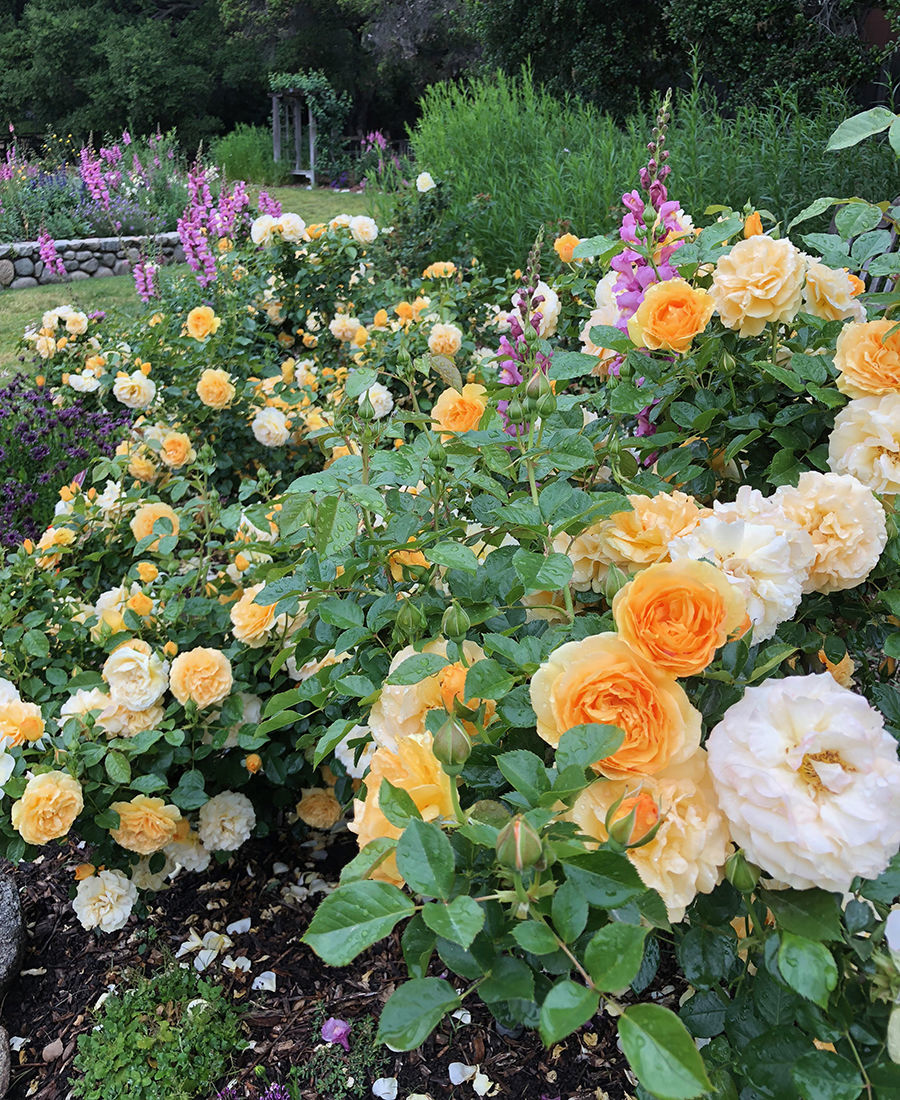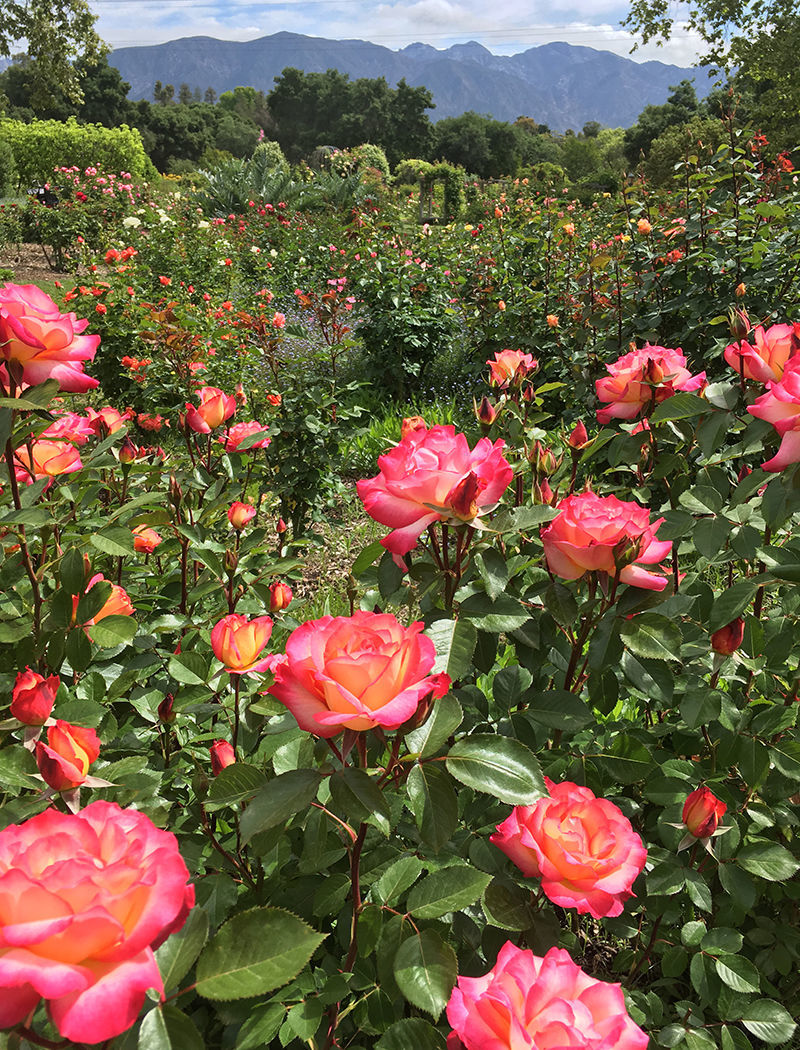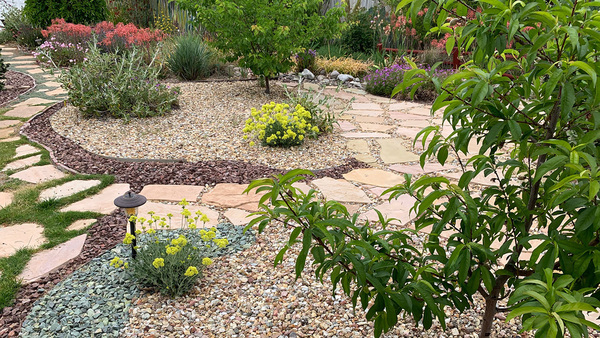
Gardeners love cut flowers. And there is nothing more satisfying than growing your own cut flowers. With the heavy carbon footprint of imported roses, as well as the difficulty in finding cut flowers that have not been treated heavily with pesticides, I do believe that roses are worth growing in Southern California. Roses (Rosa spp. and cvs., Zones 3-9), however, tend to be thirstier than drought-tolerant cut flowers such as protea (Protea spp. and cvs., Zones 9-12), so here are some tips and tricks for how to grow them with less water.
Select the best variety
As always, plant selection is very important. Choose roses that have heat tolerance in the description, or that have been hybridized in California. Also, check out unusual hybrids or roses that might have been cross-bred with tough-as-nails species such as rugosa rose (Rosa rugosa, Zones 2-7), which can have lower water needs and more disease resistance.

Add mycorrhizae at planting
The first step to take starts at the beginning, during establishment. When you plant your roses, add a mycorrhizal inoculant to the root ball. Studies show that these beneficial fungi help plants become more vigorous, with increased drought and disease resistance and the ability to take up more nutrients and water.
Be sure to water deeply
After planting, make sure that you water your roses deeply but infrequently in order to develop deep roots. If you water too often with a small amount of water, the plant will only form surface roots and will dry out quickly.
Often people overwater their roses in the hot season due to midday wilting from the hot temperatures. But roses wilt in hot temperatures even when their roots are very wet. Instead of guessing how often you need to water, you can also find your true wilting point in the hot season in order to set your timers. Stop watering your roses, and then check each morning before it gets warm to see if they are wilting. Count the days that they lasted before wilting, and subtract one to set your watering frequency.

Amend and mulch regularly
Make it part of your routine in pruning season to amend and mulch the soil. Amending soil with compost makes the soil more able to hold onto water; the organic material acts like a sponge, absorbing and retaining water rather than letting it run off. Mulch acts as an evaporation barrier as well, keeping up to 30% more water in the ground. Make sure to pull the mulch a few inches away from the main stems of the rose, as roses need good air circulation to prevent disease.
Rachel Young is the former Director of Horticulture and Garden Operations at Descanso Gardens in La Cañada, California.



















Comments
Log in or create an account to post a comment.
Sign up Log in